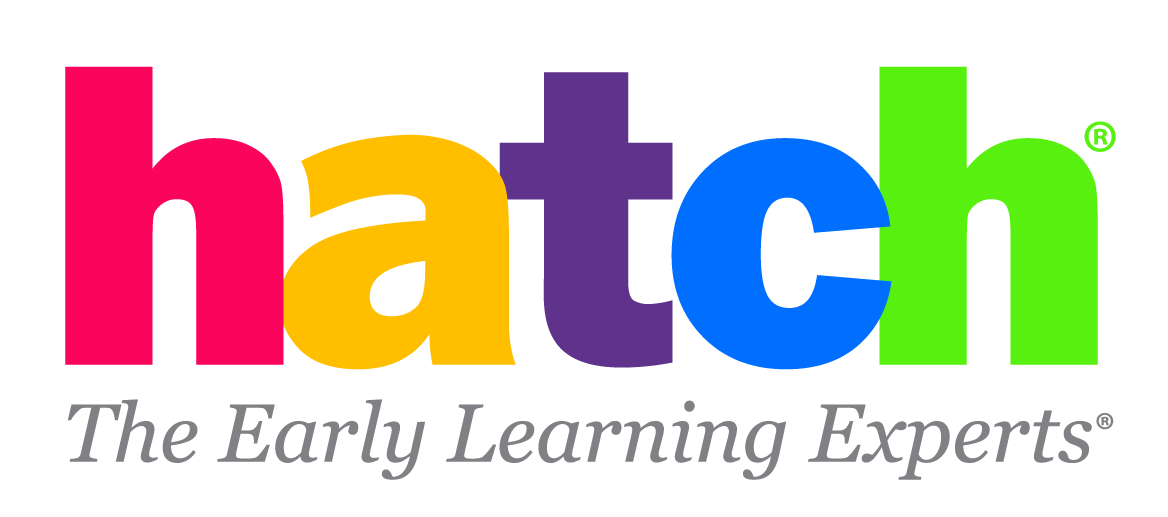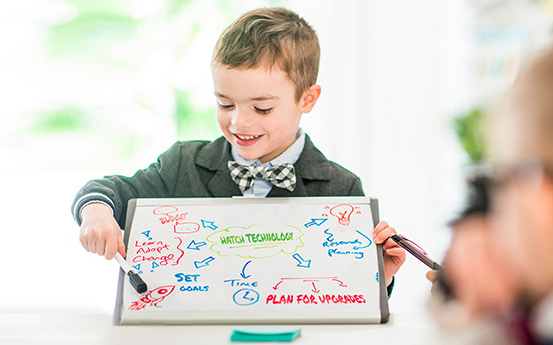Adding the right technology to your early learning program takes time and shouldn't be rushed. (No one likes a pricey tech tool that sits on a shelf covered in dust because it didn't deliver on its promises.) So before little fingers ever touch a screen, it pays to have a plan.
We're not talking about book-thick plans that no one will ever read, just a clear, concise outline. Your plan should make it easier to choose, implement and maintain technology that is developmentally appropriate and supportive of little learners (and the educators who lead them).
Here, we share best practices for successful technology implementations that we've gleaned from over 30 years of working with early childhood educators.
1. Be a planner.
If you want to find impactful technology for young learners, you'll need to give yourself time to work through the process of budgeting for, researching, buying and then implementing technology.
First, build your budget to include estimated costs for the solutions you want. Don’t forget to add items like installation and professional development so you aren’t hit with surprise costs. The budgeting phase is also a great point to see if your eligible for funding options.
With your budget in place, you’re ready to dive into the work of making educated purchasing decisions. This requires research, asking plenty of questions and even arranging demos so you can see the technology in action. When you decide on a tool, you still need to account for ordering and shipping times, set up and product training. There's also the time it takes for educators and children to adopt the technology and become proficient users.
So, give yourself a few months before you hope to start using technology to begin your search.
For most schools, including early learning centers, technology planning is a continuous cycle that repeats each year. The process generally looks like this:
- Fall: Research and information gathering
- Winter: Pilot solutions
- Spring: Decision Making
- Summer: Most schools purchase technology over the summer so solutions are in place for the new school year
2. Set crystal-clear goals for technology
What do you want from the technology you choose? Are you focused on building kindergarten readiness skills? Do you need a more accessible approach to assessment? Are you trying to encourage children to grow their social and emotional skills? Having clear goals will help you find the right technology for the job.
Forming an evaluation team of IT staff, administrators and practitioners will help you ensure you’re taking important perspectives into consideration as you set the goals for technology.
When your goals for technology are razor-sharp, it's easy to vet which functionality and features meet your needs and which don't. That clarity can also keep you from being overwhelmed by the many choices available. You can quickly see which solutions tick the boxes of your technology goals (and which you can set aside for now).
3. Choose age-appropriate technology
A laptop and a mouse aren't the best options for early learners who have little hands and are still developing their fine-motor skills. Instead, young children need technology specifically designed to meet their physical and developmental needs.
Check that your technology choices are age and developmentally appropriate. For example, is it easy for young learners to independently login, use and exit programs? Does the tech have interactive elements? Does it encourage social interactions?
For more guidance on how to choose wisely, watch this short video from Chip Donohue, Director, Technology in Early Childhood Center at Erikson Institute called Three Tips For Early Childhood Educators For Putting NAEYC/Fred Rogers Joint Tech Position Statement Into Practice. Donohue gives concise advice for how to choose and use technology with early learners.
4. Dig into the research
You've narrowed down which technology solution meets your needs, now it's time to dig into the research around your choices. Use this time to understand if the features and functionality will help you meet your learning goals.
- Look for research about the impact of technology. (Reputable solutions will share research on their websites.) NAEYC also has some excellent research and articles focused on how early learning centers are using developmentally appropriate technology intentionally.
- Read customer success stories to understand how other educators are succeeding with the technology.
- Talk to other early childhood educators using the technology. Did they face any hurdles? Do they have any advice or tips to share that could influence your choice or even make your implementation go more smoothly?
5. Plan for upgrades and replacements
Nothing lasts forever, it's a given that your technology will need replacing at some point. Don't let the cost come as a surprise, build budget dollars and time into your plan for updating your technology.
Here are our recommendations on when to replace or upgrade technology so you can be sure it works when you need it:
- Tablets every three years
- Larger items like interactive displays and social/emotional tables every three to four years
6. Provide Professional Development.
Professional development (PD) is the glue that holds your technology plan together. If educators don’t understand how to use a solution and why they should use it, adoption will be low and children won’t reap the full benefits of technology. Make professional development part of your plan and seek out solutions that provide flexible training options that all educators can access, such as live online sessions, self-directed on-demand sessions and on-site PD.
7. Make technology planning ongoing.
Finding, buying, using, upgrading or replacing technology is a cycle. With an annual technology plan in place, you'll have the time, information and budget dollars you need to adopt technology that best supports little learners and educators.
At Hatch, we want all learners and educators to succeed. We also want to make the technology purchasing process less challenging. Throughout our website, you'll find support, advice and best practices to help you choose and implement technology successfully, along with our research-based, age-appropriate technology.
Visit our resource center to find webinars, research, e-books, success stories and videos all designed to guide you and your students to learning success.

